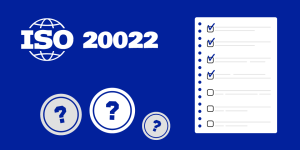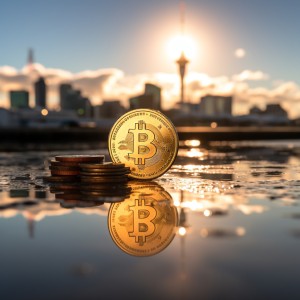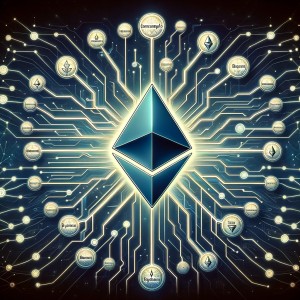Boba Network is a decentralized layer-2 platform that operates across multiple blockchains including Ethereum, BNB, Moonbeam, Avalanche, and Fantom. Its primary purpose is to offer developers a scalable infrastructure for constructing decentralized applications (dApps). The platform incorporates a distinctive indexing and querying system that enables developers to efficiently access blockchain data. This feature is vital for the development of scalable dApps, as it allows for streamlined data retrieval and processing.
It launched its mainnet beta version in August 2021 with the goal of reducing transaction and computation fees, improving throughput, forming bridges on Boba, and expanding the capabilities of smart contracts on Ethereum. The network achieves this by utilizing Optimistic Rollups (ORs), a Layer-2 scaling solution that considers transactions valid by default unless they are challenged. If a transaction is challenged, it undergoes computation-based verification.
Enya, a blockchain and artificial intelligence (AI) infrastructure company, and the OMG Foundation (formerly OMG Network and OmiseGo) provide support for the Boba Network. Enya, which played a significant role in the development of OMG, contributes its blockchain infrastructure expertise to the project. The collaboration aims to offer a scalable platform for application development that is fully compatible with Ethereum, enabling developers to create powerful and versatile applications more efficiently.
The Boba Network utilizes the Boba token (BOBA) to facilitate governance and incentivize network growth and user adoption in the decentralized finance (DeFi) ecosystem. The token has various applications, including governance functions within the network and incentivizing participation and usage in DeFi protocols. Additionally, the Boba Network can be utilized by non-fungible token (NFT) projects and supports Web3-enabled applications, expanding its potential use cases in the blockchain ecosystem.
How does Boba Network work?
The Boba Network operates by leveraging the optimistic rollup scaling solution to address challenges related to Ethereum gas fees and transaction speed. It exists as a set of smart contracts within the Ethereum blockchain, enabling the execution of Ethereum transactions.
By utilizing Optimism’s optimistic rollup technology, the Boba Network ensures compatibility with the Ethereum Virtual Machine (EVM) and the Solidity programming language. This compatibility facilitates seamless migration of smart contracts from the Ethereum mainnet to the Boba Network. Additionally, being EVM-compatible means that any Ethereum smart contract can be executed on the Boba Network. The network relies on Ethereum’s robust security infrastructure to maintain the integrity of transactions and ensure a high level of trust.
Optimistic rollups (ORs)
Optimistic rollups (ORs) are a scaling solution that optimizes the efficiency and performance of blockchain networks, such as Ethereum. ORs work by batching transactions off-chain and then submitting them to the Ethereum mainnet or another Layer 1 chain for finalization.
The batching process occurs off-chain, which reduces the computational burden on the mainnet, resulting in improved transaction throughput and decreased network congestion. This optimization helps to minimize gas fees for users.
ORs operate under the assumption that transactions are valid by default, hence the term “optimistic.” However, if someone suspects a transaction to be questionable or fraudulent, they can initiate a challenge. When a transaction is challenged, a fraud computation proof process is triggered to verify its validity.
To expedite the process and bypass the challenge window, users have the option to pay high fees to bridge their cryptocurrency back to Layer 1 (L1). In such cases, liquidity providers on L1 assume the risk of fraud and are compensated for their participation. In essence, users play a crucial role in the fraud-proofing process, and the Boba Network rewards them for identifying and reporting fraudulent transactions.
Bridging & withdrawals
To interact with the DeFi applications supported by the Boba Network and avoid high gas fees, you have the option to bridge ether from Ethereum to Boba using the Boba Gateway.
The Boba Network boasts transaction fees that are claimed to be 100 times smaller than Ethereum’s gas fees. Additionally, you can mint NFTs on the Boba Network and benefit from lower transaction costs. If desired, you can later move these NFTs to Ethereum. Transaction costs on the Boba Network are typically paid in the native coin of the respective Layer 1 chain or BOBA token.
To bridge your crypto assets to or from the Boba Network, you will need ETH (or the native coin of other supported chains) and a MetaMask wallet. This allows you to seamlessly transfer assets and utilize the features and capabilities of the Boba Network.
When it comes to withdrawing from the Boba Network, you have two options: the standard exit or the fast exit. The standard exit process usually takes a few days to complete. Alternatively, the fast exit option offers a significantly quicker withdrawal, typically taking only minutes. Fast exits utilize liquidity pools and require users to pay a small fee for the expedited service.
The Boba Network provides a gateway to bridge ether from Ethereum, enabling interaction with supported DeFi apps and avoiding high gas fees. The network offers significantly lower transaction fees compared to Ethereum, allows minting of NFTs with reduced costs, and supports smooth withdrawals through standard or fast exit options. You can utilize ETH or the native coin of other supported chains, along with a MetaMask wallet, to bridge your crypto assets to or from the Boba Network.
Top Bridges on Boba Network
- Official Boba Bridge Ethereum: The official bridge provided by Boba Network to transfer assets from Ethereum to Boba.
- Official Boba Bridge Avalanche: The official bridge provided by Boba Network to transfer assets from Avalanche to Boba.
- Official Boba Bridge Binance: The official bridge provided by Boba Network to transfer assets from Binance Chain to Boba.
- Official Boba Bridge Moonbeam: The official bridge provided by Boba Network to transfer assets from Moonbeam to Boba.
- Official Boba Bridge Fantom: The official bridge provided by Boba Network to transfer assets from Fantom to Boba.
- Synapse: Synapse is a decentralized finance (DeFi) multichain bridge that enables users to seamlessly transfer native assets across different chains.
- Celer: CBridge, introduced by Celer, offers a top-notch cross-chain token bridging experience with ample liquidity for users.
- Beamer Bridge: Beamer Bridge allows users to securely and swiftly transfer their ERC assets between EVM-compatible rollups.
- BoringDao: BoringDao serves as an ultimate decentralized autonomous organization (DAO)-driven inter-blockchain hub for Web 3.0, providing a multi-chain solution for various crypto assets.
- Chainswap: Chainswap acts as a cross-chain hub, connecting ecosystems across different blockchains, facilitating the seamless transfer of assets.
BOBA Token and Its Diverse Use Cases
BOBA Token serves as the primary cryptocurrency within the BOBA Network, offering a range of applications and functionalities within the platform.
Transaction Fees: BOBA Token is utilized as the designated currency for paying transaction fees on the BOBA Network. Users can conveniently utilize BOBA tokens to cover transaction costs, simplifying the fee payment process.
Staking Rewards: BOBA Token holders have the opportunity to stake their tokens and earn rewards for actively participating in securing the network. By staking BOBA tokens, holders contribute to network security and performance, and in return, they receive rewards for their valuable contributions.
Governance Decisions: BOBA Token holders play an integral role in the platform’s decision-making processes through governance voting. They have the ability to vote on proposals, suggest changes, and actively participate in shaping the platform’s future direction. This democratic feature ensures that BOBA Token holders have a voice in determining the platform’s evolution.
Collaborations and Products: The BOBA Network has established strategic collaborations with prominent companies, including QuickSwap, fostering valuable partnerships within the ecosystem. Additionally, the platform has developed a range of tools and products to support developers in building on the network. For instance, BOBA Explorer allows users to explore the BOBA blockchain, while BOBA Wallet provides a non-custodial solution for storing and managing BOBA tokens securely.
By incorporating these use cases, BOBA Token enhances the functionality and utility of the BOBA Network, enabling seamless transactions, active participation in governance, fostering collaborations, and providing essential tools to support developers in their endeavors.
Integrating the BOBA Network into Your Business
Incorporating the BOBA Network into your business operations can be a strategic decision, as it offers a variety of tools and products that facilitate the acceptance of BOBA payments. To simplify the process of accepting BOBA payments, NOWPayments, a renowned cryptocurrency payments provider, offers a range of helpful tools. Here are some of the available options:
eCommerce Plugins: Compatible with popular eCommerce platforms like WHMCS, Shopify, WooCommerce, Magento 2, PrestaShop, OpenCart, Zen Cart, and Shopware, these plugins enable seamless integration of BOBA payments into your online store.
Payment Link and Point-of-Sale (PoS) Terminal: Businesses can utilize a payment link and a virtual PoS terminal to accept BOBA payments easily. This allows for convenient payment collection from customers in various settings.
Recurring Payments: Companies have the option to issue recurring invoices, facilitating regular and automated BOBA payment collections from customers.
Custodial Recurring Payments: This tool enables businesses to set up separate billing accounts for their customers, empowering them to top up these accounts with their preferred cryptocurrency. This offers flexibility and convenience for recurring BOBA payments.
API: NOWPayments provides a versatile API that empowers businesses to create customized cryptocurrency payment solutions tailored to their specific needs. This API can be integrated into existing systems to streamline BOBA payment processes.
Mass Payouts: Businesses can automate mass payouts to multiple addresses, such as salary, bonus, reward, or rebate disbursements. This feature simplifies the process of managing and executing large-scale BOBA payments.
Donations: Three different donation tools—Link, Button, and Widget—are available to businesses, enabling them to receive crypto donations conveniently and securely.
By utilizing these tools offered by NOWPayments, businesses can easily integrate BOBA payment acceptance into their operations. This enables a seamless customer experience, expands payment options, and harnesses the advantages of the BOBA Network for business growth and efficiency.
Conclusion
The Boba Network has established itself as a prominent decentralized platform that facilitates seamless asset transfers and interoperability across multiple blockchains. With its range of official bridges, the network offers users the ability to transfer assets between Ethereum, Binance Chain, Moonbeam, Avalanche, Fantom, and more. The Boba Network bridges not only provide enhanced scalability and reduced transaction fees but also open up opportunities for developers and businesses to leverage the network’s capabilities for decentralized applications and DeFi solutions. The diverse range of bridges on the Boba Network allows for a more interconnected and efficient blockchain ecosystem, enabling users to explore new possibilities and benefit from the unique features of each supported chain.





